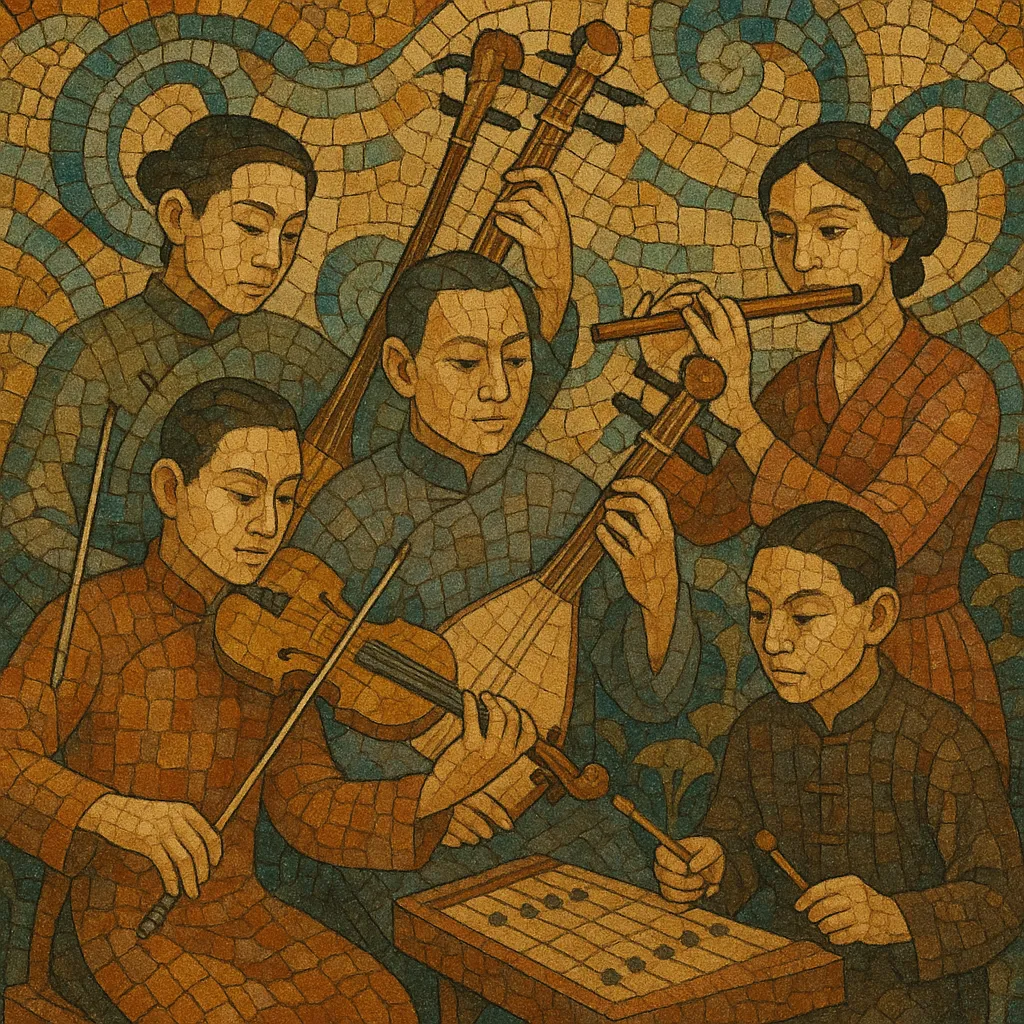Guangdong yinyue (Cantonese instrumental music) is a chamber-style tradition from the Pearl River Delta that crystallized in tea houses and professional ensembles in the early 20th century. It features a bright, agile lead fiddle (the gaohu), supported by plucked strings (pipa, qinqin, sanxian), hammered dulcimer (yangqin), bamboo flutes (dizi/xiao), and a small percussion battery articulating the ban-yan (beat/upbeat) cycle.
The style balances lyrical pentatonic melodies and florid ornamentation—slides, turns, and rapid grace notes—with buoyant, dance-like rhythms. Signature pieces such as “Bu Bu Gao” (Stepping Higher) and “Autumn Moon Over a Calm Lake” showcase a refined urban elegance shaped by Cantonese opera practice, regional folk tunes, and the cosmopolitan café/ballroom milieu of 1920s–30s Guangzhou–Shanghai.
Cantonese opera musicians and tea-house bands in Guangzhou began distilling a secular instrumental repertoire in the early 20th century. By the 1920s, this coalesced as Guangdong yinyue: small ensembles playing lively qupai-based pieces and new compositions suited to urban entertainment venues. The invention and standardization of the gaohu (a high-tuned two-string fiddle) gave the music its trademark timbre.
Many Guangdong players circulated through Shanghai’s vibrant music scene, absorbing cosmopolitan tastes and recording prolifically on 78 rpm discs. This era popularized now-canonical items—e.g., Lü Wencheng’s “Bu Bu Gao” and “Autumn Moon Over a Calm Lake”—and codified ensemble roles: gaohu lead, yangqin arpeggiation, pipa/qinqin rhythmic drive, and crisp tea-house percussion patterns.
After 1949, conservatories and broadcasting ensembles preserved and arranged Guangdong yinyue for larger Chinese orchestras. Conductors and arrangers standardized versions, notated parts, and expanded concert formats, bringing the repertoire to national audiences while retaining chamber renditions in Cantonese cultural hubs and on radio.
Hong Kong and Guangdong professional ensembles rejuvenated the style on stage and recordings. Soloists and groups modernized technique and presentation, and pieces entered film/TV scores and Chinese orchestra programs worldwide. Today, Guangdong yinyue functions both as an intimate chamber idiom and as a polished concert genre, emblematic of Cantonese musical identity.


